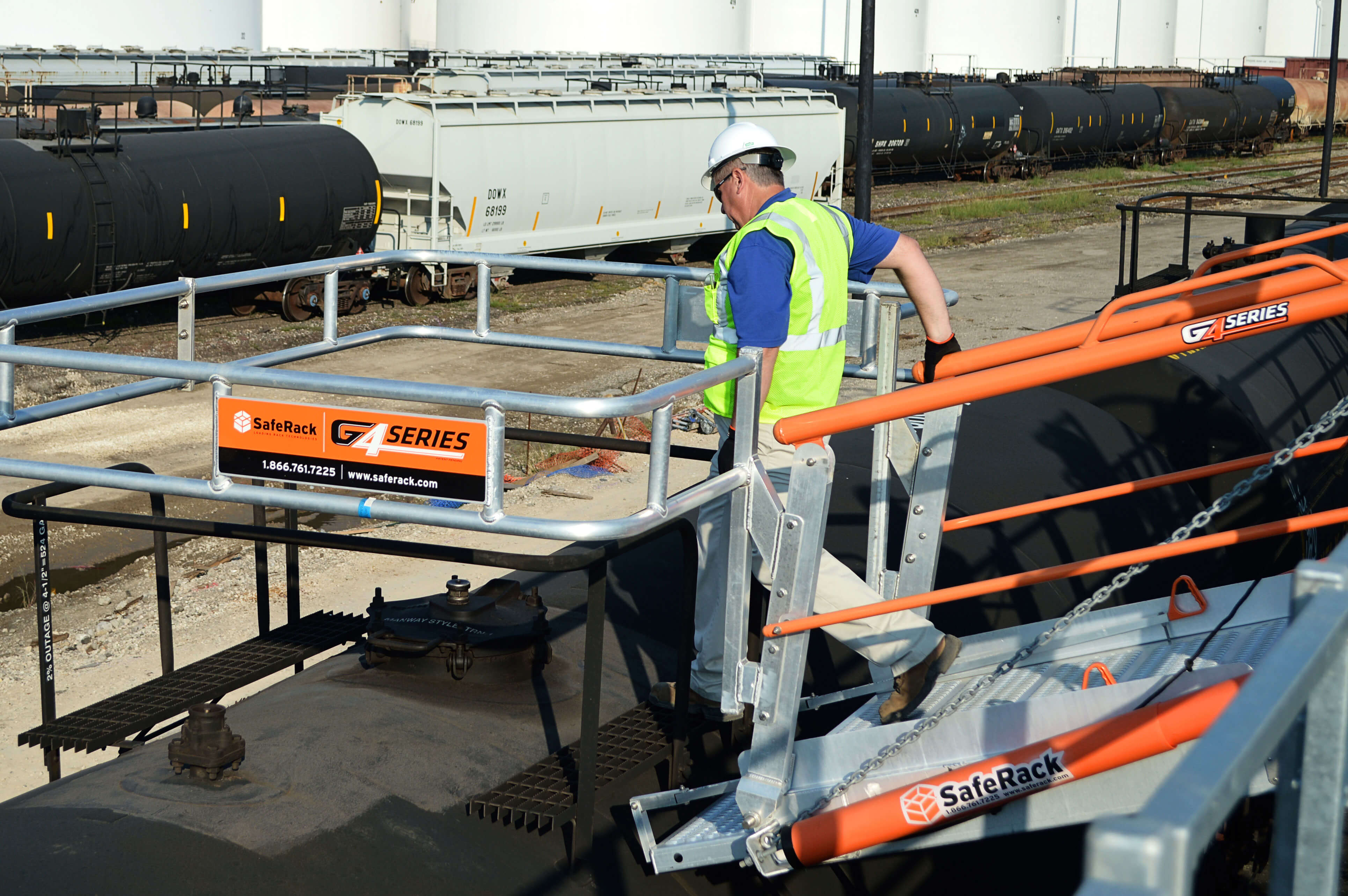
Workplace health and safety is one of the most important elements in a workplace — just as important as the staff or the customers. Without stringent policies and procedures in place, a workplace cannot run safely or efficiently and is prone to potentially fatal hazards. But employers that do invest in a comprehensive health and safety program see returns in lower insurance premiums, a reduced rate of injury and higher employee morale.
Each workplace is unique and so, too, are their needs when it comes to health and safety measures. Common workplace injuries can range anywhere from repetitive strain injury while using your computer, to a hazardous fall from a high surface in an industrial environment. Every company must have an effective workplace safety training plan that is regularly modified and updated to align with employees’ changing needs.
In 2014 alone, there were more than 90 deaths per week in American workplaces, according to the U.S. Department of Labor Health and Occupational Safety and Health Administration. The four most common of these deaths were from falls, electrocutions, being struck by an object and getting caught in between two things. Such a varied group of fatal hazards further highlights the need for a thorough safety training process in each workplace.
To help implement an effective safety training process for your employees, follow these seven simple steps. Before long, you’ll have your workplace running as safely and efficiently as possible.
1. Identify what training is needed for your workplace.
Workplace safety training will be an entirely unique experience for each workplace. So first, you’ll need to specify the tasks your employees take on each day. For most workplaces, the best approach to safety training is to provide a comprehensive program that covers the roles and responsibilities of each staff member so that all employees are involved. Once initial training has been given, this could form the basis of an orientation program for all new employees to complete.
For others, there may be specific risks that are unique to the equipment used within a workplace. This will require very specific training. While this can be performed by the equipment manufacturers themselves, the responsibility ultimately lies with the employer.
Finally, an employer may decide to implement a safety training program due to recent or increased incidents or risk in the workplace. Although training should be delivered well before this becomes an issue for employees, it is certainly a good motivator to become serious about occupational health and safety practices.
2. Determine specific workplace safety training needs.
The type of workplace environment in which your employees conduct their daily business will determine the topics to be covered in training. For instance, those working in white-collar industries will be exposed to different risks and hazards than those in a blue-collar profession, so the training needs to be specified to each organization’s needs.
Other than the training required for equipment and machinery used in the workplace, you’ll also need to consider the following possibilities for work hazards:
- Ergonomic use of computer and workstations for employees who spend large amounts of time working on desktops
- Possible slip and trip hazards around the workplace, both in the office and industrial environments
- Heavy lifting tasks and the importance of correct methods for performing them
- The risk of chemicals or other hazardous materials and liquids at your workplace
- Excessive noise or fatigue that can have indirect effects on staff and their long-term mental and physical wellbeing
If you’re unsure of exactly what to cover in safety training, one of the best methods for identifying needs is to conduct a Job Hazard Analysis. This is a technique for identifying hazards that focus on specific job tasks. It looks at not only the employee but also the task, tools and work environment in which they perform in order to identify uncontrolled hazards. Once the hazard is identified, they’re easier to target in your training program, eliminating or reducing their risk level. A Job Hazard Analysis can also be a powerful tool in training new employees, as it covers a step-by-step procedure on how to perform the most common workplace tasks.
3. Identify your goals and objectives.
The main goal when providing safety training is to ensure a safe work environment for employees. But for a more successful training session, you’ll need to focus on clear and measurable targets that you can evaluate as time goes on.
A measurable objective should use plain language to indicate a certain skill or understanding level that an employee should reach by a certain point. This ensures there is no confusion over the direct intention of a lesson, and a clear and defined requirement deadline is clearly outlined.
An example of a solid measurable objective would be asking that all employees are able to demonstrate a safe lifting procedure by the end of the training session. However, there should also be measurable objectives that take place outside of the training session. This ensures employees are motivated to continue on with their safety training after lessons are complete.
For each task you focus on in your training, make sure there’s a detailed learning objective so that employees can understand exactly what’s expected of them. This will demonstrate clearly for employees what they’re there to learn and what to expect from you.
4. Develop learning activities to teach workplace safety.
With your objectives in mind, you’ll now need to decide how to achieve them. Employers should consider a range of different teaching methods when delivering a safety training program, including the use of props, reading materials, resources and speakers.
To decide on the best method for delivery, it helps to keep your employees in mind, as well as their specific tasks. You’ll want to keep them engaged and entertained at all times, while also keeping the educational factor in play. Some workplaces might respond better to visual aids, while others work best with reading materials. For the best results overall, try to use a mix of methods so your employees don’t get bored in their training.
Ideally, all learning activities should offer students the chance to demonstrate what they have learned. Make sure these activities relate directly to the employees and their specific daily jobs. By keeping lessons relevant, you’ll engage employees further by giving them hands-on experience they can use in the workplace. It also makes it easier for them to remember the lessons and apply them to their own lives.
Some suggestions for students to demonstrate what they’ve learned might include an open discussion, brief oral or written exams, or a hands-on practical demonstration of the task where the instructor assesses their abilities.
5. Schedule and commence safety training.
With your goals and objectives set, you should have an idea of how much time you’ll need for the session. When scheduling safety training, ensure it’s at a time when all employees can attend and when your workplace is not likely be as busy. It’s important not to rush the training or have it last too long, so be sure to schedule it for a time when everyone’s concentration levels will be high.
Once safety training has commenced, there are a few key things to remember to be successful:
- Keep the training relevant to the work your employees do on a daily basis and relate it to their specific jobs. By using real life examples, your employees will stay interested in the lesson.
- Make the training as engaging and entertaining as possible without subtracting from the educational factor. Try a range of teaching methods including reading materials, props and even DVDs to mix things up a little.
- Allow your staff to participate in the lessons rather than instructing only. Give the opportunity for open discussions, role-play scenarios and hands-on activities that will keep them engaged and motivated to learn.
6. Evaluate the effectiveness of your training.
Once you’ve completed your training program, you’ll need to evaluate its effectiveness with your staff. A training program that isn’t continually evaluated and adjusted will lose its relevance and have a lower long-term success rate.
There are a few different ways to do this. To procure honest and thorough feedback, it’s best to utilize a mix of all three:
- Work with supervisors. A week after the training, follow up with supervisors or managers to see how the workplace is running. As these people have constant interaction with all employees, they’ll be able to notify you of any obvious changes since the training program. Continue to check in regularly until your next session for ongoing feedback, and encourage supervisors to come to you with any safety concerns for the next session.
- Poll employees. Speak to the employees who took part in the training program both immediately following the program, and again at a later date. You can opt for an anonymous feedback system to ensure a more honest representation of how well the training suited your workplace and if the delivery methods were successful. Along with supervisors, encourage employees to report possible safety concerns so that these can be covered in subsequent training programs.
- Monitor data over time. Monitor the workplace data regarding injuries, risks and complaints to see if there’s an increase or decrease in reported numbers. If the rates of injury or risk have decreased, this is a good indication that the style and content of the training were effective. If not, you may need to reevaluate and adjust your training program to achieve better results. This method is also handy in identifying new areas to cover in your training that may not have been considered previously.

7. Improve and update your safety training.
After reviewing the feedback from your initial training session, even if you aren’t finding much negative feedback to respond to, you’ll still want to focus on keeping upcoming training sessions relevant. The last thing you want is to become complacent with workplace safety. Keep yourself up-to-date with new occupational health and safety regulations, along with any specific equipment requirements that might be relevant to your workplace.
Investing your time and energy into an in-depth safety training plan will not only give your employees a safe work environment, but it will also aid productiveness and efficiency.
Without stringent health and safety procedures in place, employees are open to a range of problems, including increased risk of injury. But with these simple steps, it’ll be easier to get your workplace’s safety measures up to scratch by providing engaging, entertaining training to motivate all of your staff to work safely.


























